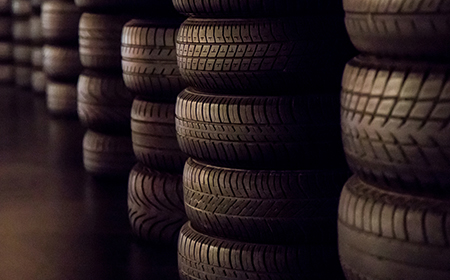While there are a few novelty tires with color incorporated into the tread or sidewall of the tire, most tires are black. This is because a key ingredient that is added to the mix of natural and synthetic rubber is carbon black. Carbon black are tiny dust-like particles that act like a bonding agent for the other ingredients in the tire. Carbon black has the added feature of catching ultraviolet rays and absorbing the heat of the sun. This helps protect the tire against ozone and UV damage.
No other additive has been found to be as effective as carbon black at protecting the rubber and prolonging the life of tires.In the absence of carbon black, ozone and UV rays would attack the molecules and chemical bonds of the rubber, which over time causes the rubber to rot, and weaken.
After many years of exposure, the light absorption capabilities of carbon black are reduced, particularly in tires on vehicles that are driven infrequently and parked outside for long periods of time. Repeated use of some tire shine products can also dull the carbon black, as well. Chemical discoloration caused by tire shine and cleaners is superficial, and limited to only the very outer layer of rubber that has been treated. Over time, chemically damaged tire rubber will return to black if scrubbed with regular soap and water. Superficial rubber discoloration does not impact the function of the tire, or pose any sort of safety risk. Older, sun and ozone damaged tires however, should be inspected by a tire professional for deep cracks and internal damage to ensure they are road worthy.
